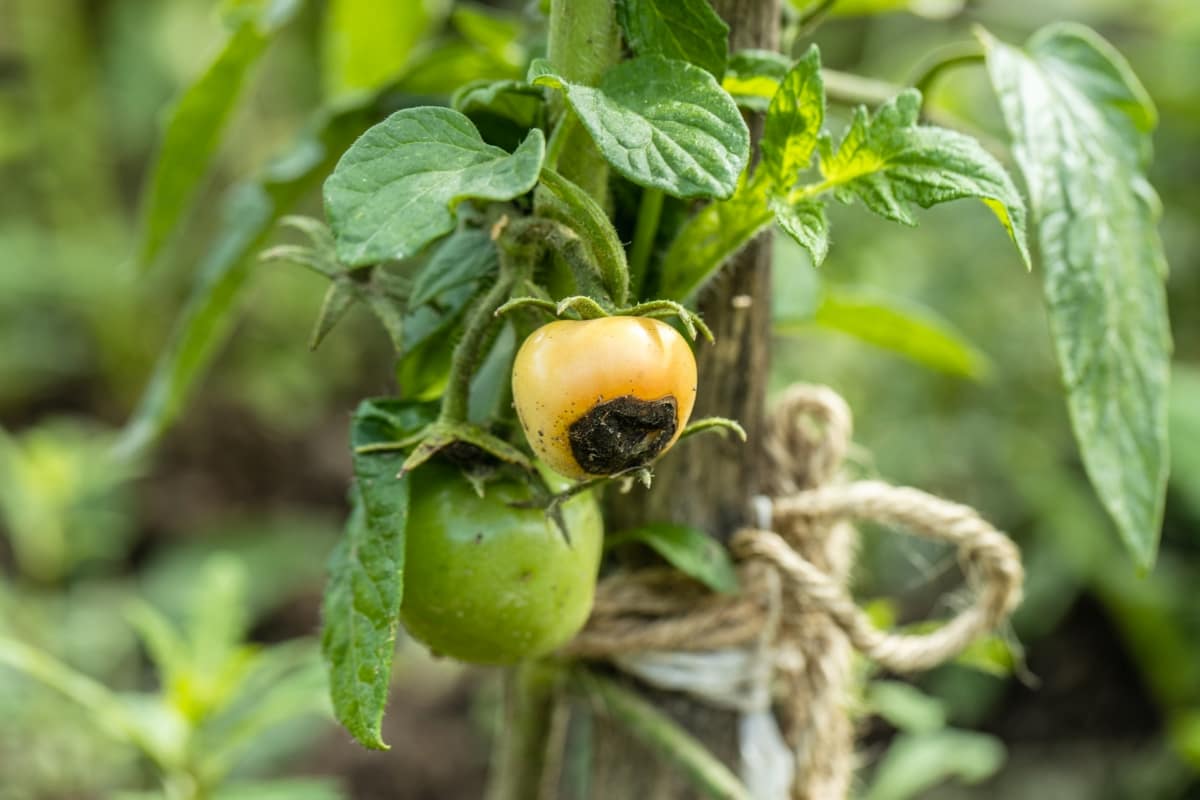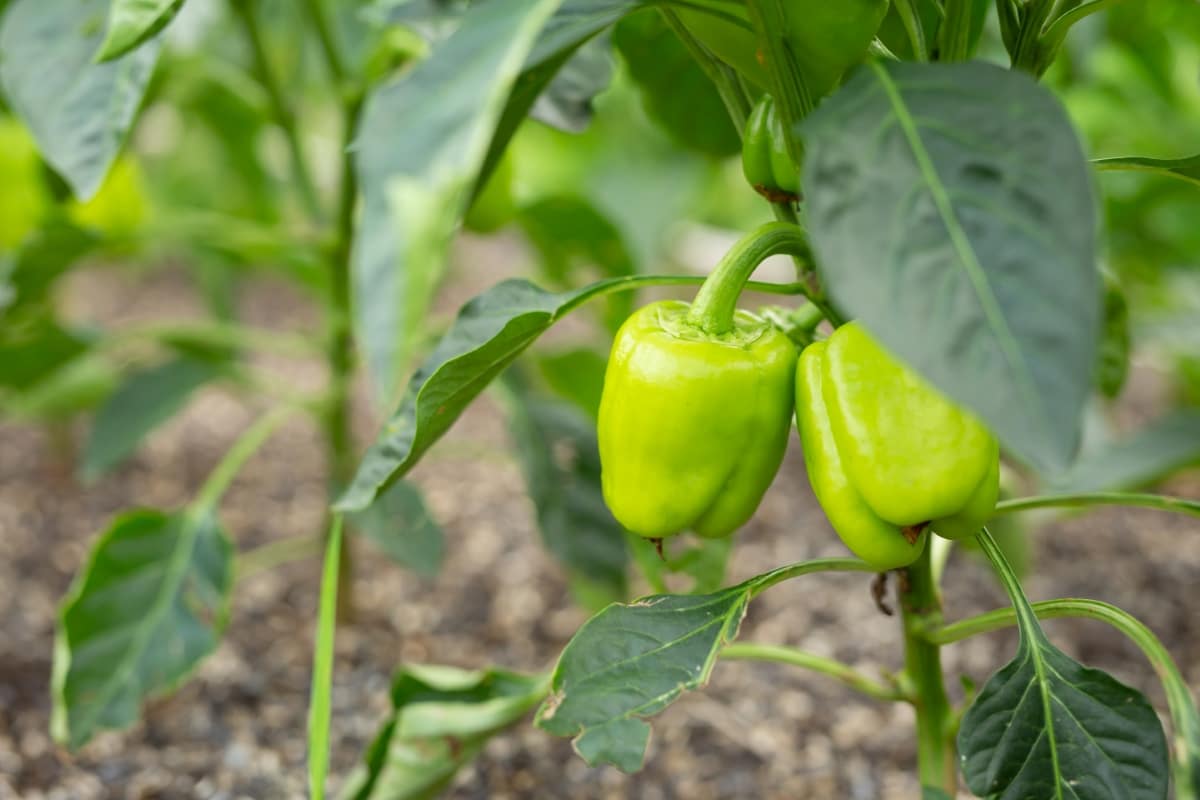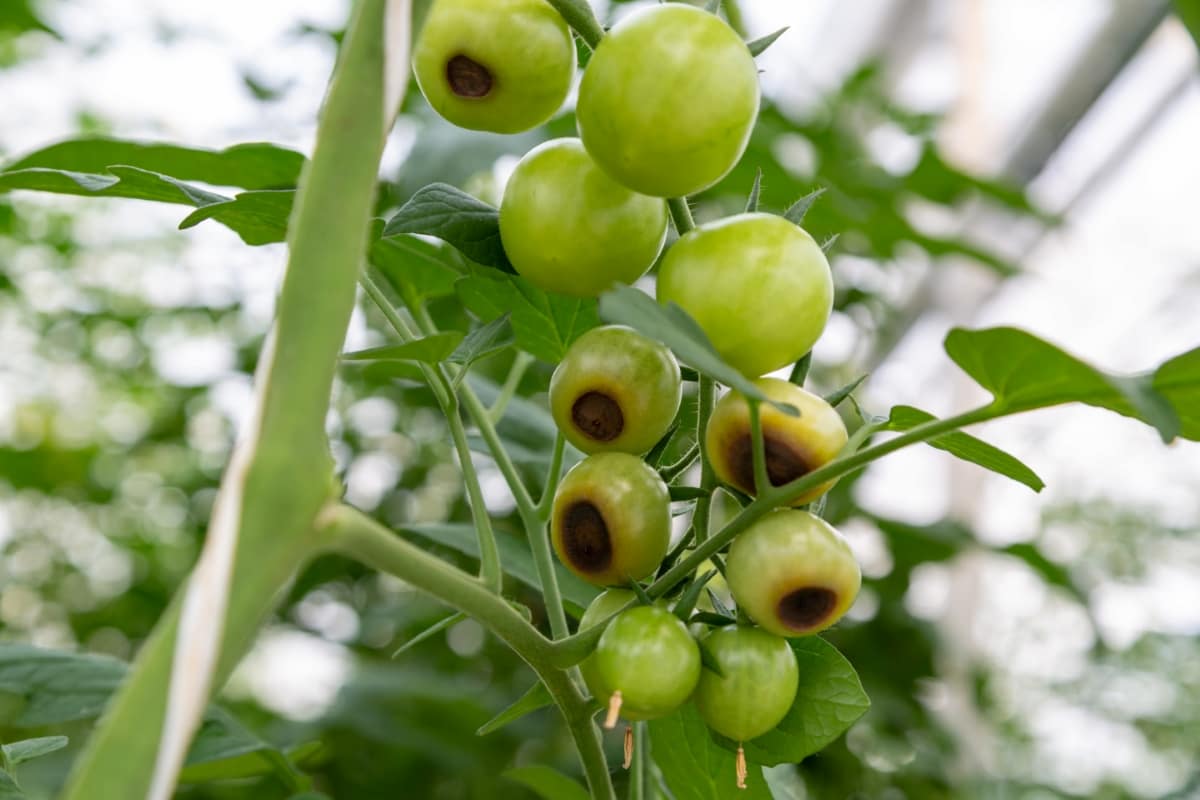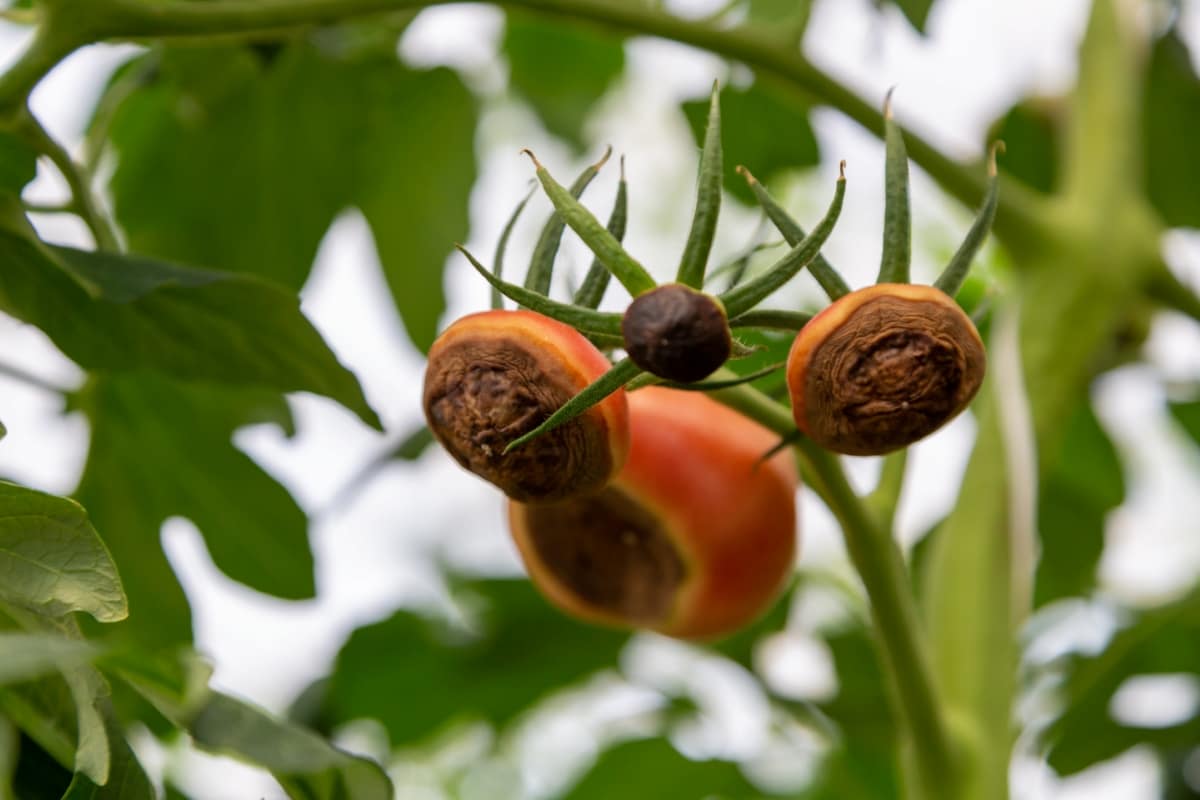Blossom End Rot is a serious issue affecting tomato and pepper crops. To prevent it, it’s crucial to test the soil for optimal calcium levels, add lime if needed, maintain consistent watering, and use calcium-rich foliar sprays during the early fruiting stages. This proactive approach ensures healthy fruit development and a rot-free crop harvest.

How to Deal with Blossom End Rot in Peppers and Tomatoes
Understand What Causes and How to Prevent Blossom End Rot in Tomatoes and Peppers
The main cause of blossom end rot is a calcium deficiency that hinders the plant’s ability to supply the growing fruit with this vital nutrient. Frequent sporadic watering impairs the plant’s ability to absorb calcium effectively, a common cause of this deficit. Establish a regular watering routine and ensure the soil remains moist to counteract this.
Think about mulching the area surrounding the pepper and tomato plants as well. Mulch regulates moisture, lowering the possibility of variations that lead to Blossom End Rot. Your plants can flourish in a calcium-rich atmosphere by identifying the source and taking preventive action.
Identify the Symptoms and Signs of Blossom End Rot in These Plants
Early detection of Blossom End Rot is essential for prompt treatments. The initial signs typically appear as tiny, wet patches on the blossom end of maturing fruits. These flaws get larger and darker and appear sunken and leathery as the illness worsens. Make sure to routinely check your plants for these telltale indicators by closely monitoring them.
Quick detection increases the chance that afflicted fruits can be saved and stops Blossom End Rot from spreading to healthy ones by enabling you to take control actions as soon as possible. Your best line of defense against this widespread tomato and pepper problem is a watchful eye.
Use Effective Strategies to Treat Blossom End Rot in Tomatoes and Peppers
Blossom End Rot requires quick attention when it occurs. To focus the plant’s energy on healthy fruits, begin by pruning off the affected ones. Modify your watering schedule to reduce plant stress and maintain consistent moisture levels. To speed up recovery, add to this by sprinkling calcium-containing solutions directly on the foliage. If you want to improve the structure and ability of your soil to hold onto water, think about adding organic matter. You may successfully treat Blossom End Rot and restore the health of your tomatoes and peppers by taking a diverse strategy.
In case you missed it: How to Control Hydroponic Tomato Pests and Diseases Naturally: How to Get Rid of Them with Natural and Organic Treatment

Understand the Role of Calcium Deficiency in This Condition
Examining the science underlying Blossom End Rot demonstrates how important calcium is to plant growth. Because calcium is a building block for cell walls, fruits maintain their structural integrity. Blossom End Rot symptoms are caused by the plant’s inability to allocate this valuable nutrient to developing fruits when it is lacking. Add calcium-rich soil amendments, such as gypsum or broken eggshells, to remedy this deficit. The calcium equation must be balanced for crops to be vigorous and healthy and to prevent Blossom End Rot.
Identify Environmental Factors that Contribute to Blossom End Rot
Environmental variables are a significant influence at the beginning of Blossom End Rot, in addition to calcium insufficiency. Variations in soil moisture and irregular watering techniques cause stress to the plant. Its fast development cycles, combined with this stress, prevent the body from absorbing calcium efficiently. Reduce the impact of these environmental stimulants by using mulching techniques and establishing a consistent watering schedule. You may give your tomatoes and peppers a healthy environment free from Blossom End Rot by being aware of and caring for these variables.
Follow Best Soil Management Practices to Prevent Tomato and Pepper Cultivation
Perfect soil management is the first step towards creating an environment resistant to Blossom End Rot. Test the soil frequently to determine its nutritional content and make any adjustments. To enhance soil structure and water retention, add organic matter. Use crop rotation techniques to stop diseases and pathogens from accumulating. Blossom End Rot danger is reduced when the soil ecology is well-managed, which creates the conditions for healthy plant growth. If you proactively manage your soil, your tomatoes and peppers will flourish in a lush, disease-resistant environment rich in nutrients.
Address Blossom End Rot Nutritionally in These Plants
Interventions related to nutrition are critical in the fight against Blossom End Rot. In addition to adding calcium, consider supplementing your plants with a balanced fertilizer to provide them with a wide range of nutrients. For plants to be healthy overall, magnesium, potassium, and phosphorus are equally important and can be lacking in soils prone to blossom end rot. Use soil testing to regularly check the levels of nutrients present, and modify your fertilizer schedule as necessary. By taking care of the nutritional side, you protect your peppers and tomatoes from Blossom End Rot and encourage a robust and abundant yield.
In case you missed it: How to Prevent Strawberry Fruit Rot Naturally: How Control with Natural and Organic Treatment

Control Blossom End Rot Using Integrated Pest Management Techniques
Pests can worsen Blossom End Rot; it’s not just a nutrition deficit issue. You must use integrated pest management (IPM) strategies to protect your crops. Determine which pests can harm plants and make Blossom End Rot worse, then take action against them. To create a balanced ecology, support natural predators like ladybugs and predatory insects. Use companion planting techniques to help your tomato and pepper plants become more resilient and to keep pests away. Blossom End Rot is largely preventable with a comprehensive pest management strategy.
Consider the Impact of Watering Practices on Its Occurrence
Irrigation techniques significantly influence blossom end rot incidence. Too much or too little watering inconsistently interferes with the plant’s ability to transfer and absorb calcium. Maintain an even moisture level in the soil by following a regular watering schedule to reduce this risk. Reduce water on foliage using strategies like drip irrigation, which directs water to the plant’s root zone. By optimizing how you water your plants, you can lower the risk of blossom end rot in your pepper and tomato harvests by creating an environment that best absorbs calcium.
Explore Genetic Variability and Resistance in Tomato and Pepper Varieties Against Blossom End Rot
As you embark on your journey to conquer Blossom End Rot, explore the realm of genetic variability and resistance in tomato and pepper varieties. Some cultivars exhibit natural resilience to this affliction, making them a strategic choice for your garden. Research and select varieties are known for resisting Blossom End Rot to stack the odds in your favor. Experiment with diverse strains, keenly observing their performance in your specific growing conditions. By harnessing the power of genetics, you empower your garden to stand resilient against Blossom End Rot, ensuring a thriving harvest season after season.
Frequently Asked Questions (FAQ) on Blossom End Rot in Peppers and Tomatoes
Can Blossom End Rot Be Treated Once It Appears?
Once Blossom End Rot appears, it cannot be cured. However, you can prevent further occurrences by addressing the underlying causes and properly caring for the plants.
Can I Still Eat Tomatoes Affected by Blossom End Rot?
Although the portion that has been impacted is not fit for ingestion, it is possible to remove the affected area, leaving the remainder of the fruit appropriate for food. However, addressing the underlying causes is essential to prevent future occurrences.
In case you missed it: Mango Stem End Rot Disease Management: Symptoms, Treatment, Chemical, Biological, Natural, and Organic Control

Conclusion
A holistic approach is needed to prevent and control blossom end rot in tomatoes and peppers. Understanding calcium deficiency, environmental factors, and genetic variability is crucial. By implementing effective strategies, you can cultivate vibrant crops and overcome the common gardening challenge of blossom end rot.
- Beneficial Insects in Pest Management
- Natural Solutions for Pest Control in Flower Gardens
- Types of Fungicides Used in Agriculture
- Common Issues in the Fruit Development Stage of Pomegranate Farming
- Fruit Development Issues in Papaya: Easy Solutions and Treatment
- Soil-Borne Diseases and How to Protect Your Plants
- Practices to Prevent Disease Spread in the Garden
- From Wilted to Thriving: How to Treat Root Rot Naturally in Houseplants
- Natural Remedies to Cure Brown Spots on Fig Tree Leaves